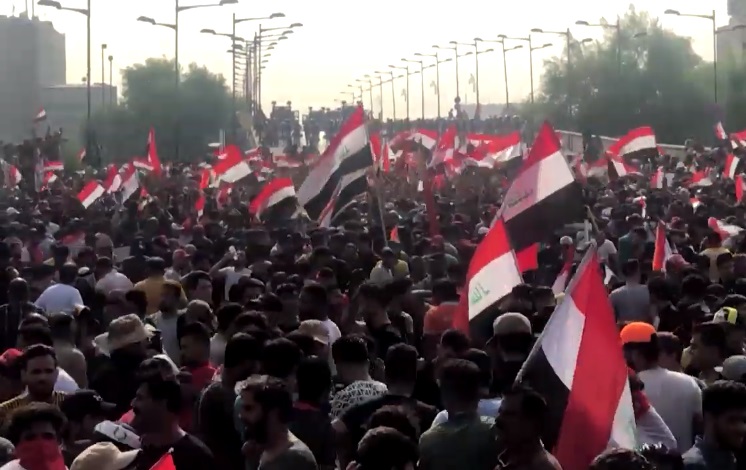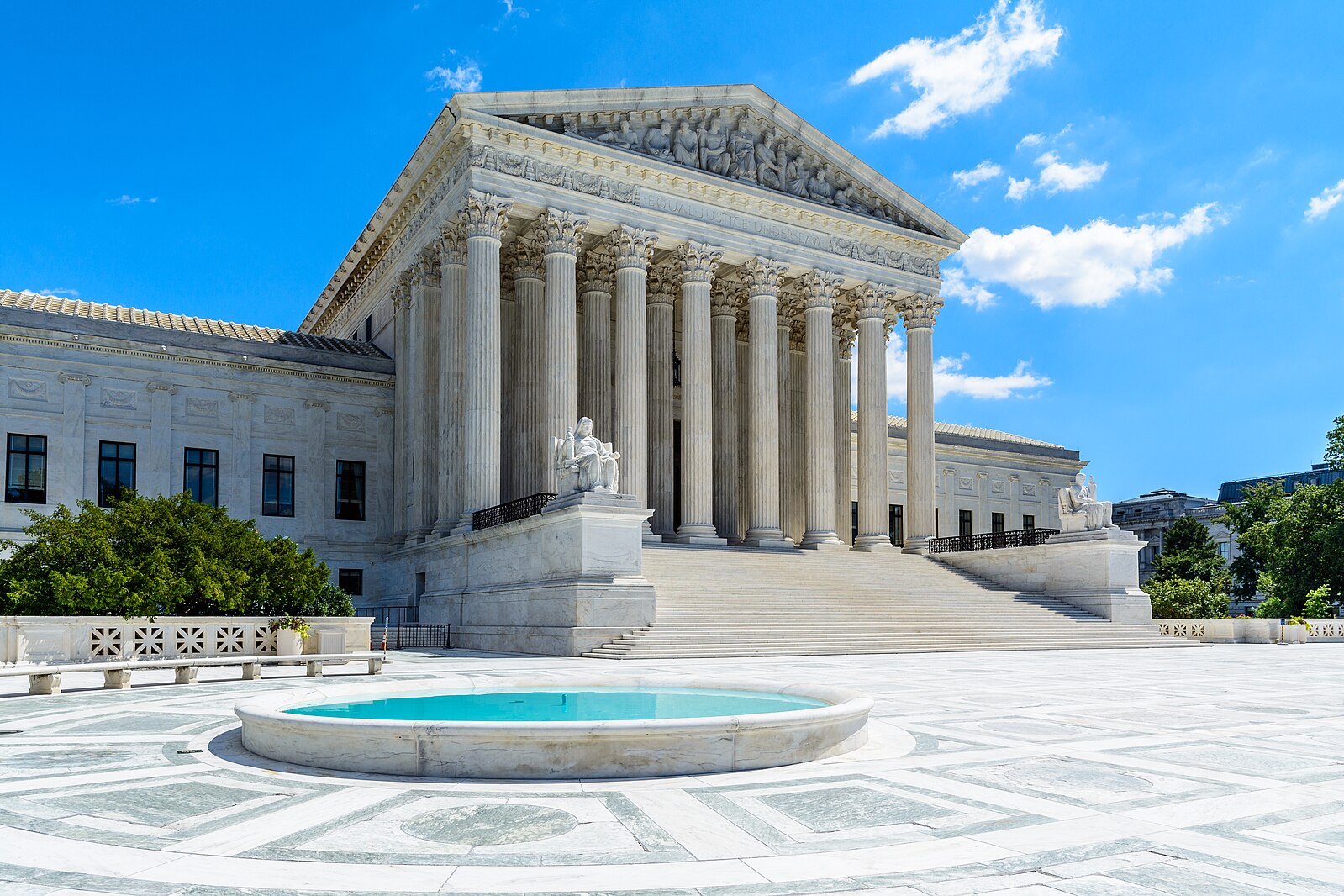The Irresistible Resiliency of Iraq’s Protesters
The odds are stacked against reform, but protesters have withstood tumultuous events and waves of repression.

Published by The Lawfare Institute
in Cooperation With

Editor’s Note: This article originally appeared on Order from Chaos.
Iraq’s protest movement has been remarkably resilient. For months now, tens of thousands of Iraqis across Baghdad and the south have mobilized against the government, demanding better services, accountability, and wholesale reform of the Iraqi state. Since the protests erupted, more than 600 have been killed and thousands more have been injured, according to human rights organizations. The fallout over Iranian commander Qassem Soleimani’s assassination was expected to signal the death-knell of the movement, but even that has failed to decisively end what is arguably Iraq’s biggest grassroots socio-political mobilization in history.
Iraqis cannot be blamed for wanting more from their government. Their country is on the brink of a socio-economic implosion as a result of a youth bulge, economic degradation, and dilapidated infrastructure. The country’s population of more than 30 million is expected to reach 50 million in a decade. More than 60 percent of Iraqis are under 24, and 700,000 require jobs every year. Iraq’s ruling class has failed to respond to the demands of the population and simply no longer has the credibility, much less the capacity, to assuage its population despite the hundreds of billions of dollars that has been expended over the past decade.
Iraq’s ruling class crudely assumed the threat of terrorism, the war on ISIS, and sectarian strife could deflect focus from their governance failures and the endemic (politically sanctioned) corruption in perpetuity. The political class has also capitalized on and exploited a powerful narrative that has been forged among its supporters—and indeed some policy circles in Washington and other Western capitals—that has measured the grievances and calamities of the country against the extremes of civil war or Baath-era rule. This sensationalist narrative propagated the notion of a revived Iraqi state and government and it took hold particularly under the previous Iraqi government of Haidar al-Abadi, yet it ignored underlying, deep-rooted issues that have galvanized an entire generation of Iraqis longing for a better future.
But the odds are against Iraq’s protesters. The environment is not conducive to a wholesale deconstruction (followed by a reconstruction) of the state or its political system, and there are very few, if any, major actors internally in Iraq and externally that want a revolutionary change that effectively upends the post-2003 political order in its entirety. Iraq’s protesters may have to also come to terms with the reality that the international community is actually much more aligned with the Iraqi ruling class (even the militias brutally suppressing them) than they think: There is far too much at stake and far too many dangerous uncertainties in a post-war climate in Iraq and the region for any major external actors to seriously contemplate backing or actively supporting an attempt to overhaul Iraq’s political system.
A large part of the challenge for the protesters is that the Iraqi political system is designed in a way that makes it impervious to a major restructuring. There is a whole host of formal and informal, state and para-state actors that dominate, shape, and manage the structures of governance and power. The country suffers from the inexorable accumulation of weapons and armed groups, the absence of viable institutions, and multiple alternative authorities that supplant the Iraqi state. Many areas are beyond the influence and control of the government, areas where power is distributed diffusely among parties, militias, tribes, and clerics.
As a consequence of these dynamics, and unlike protests in Algeria or Sudan, Iraq’s ruling elites are likely to stay in power even if the protests reach critical mass. In other words, save for its destruction by way of an external invasion, a country-wide civil war (which itself requires a decisive victor), or another dictatorship that is brought about through a coup, for example (and even then, Iraqis may be worse off than they currently are), the current system will prevail.
What makes the situation particularly perilous for the protesters is the impunity with which militia groups and state-sanctioned security forces are able to crack down on civilians. Iraq is dominated by unaccountable militia groups that wield substantial power and influence, in large part because these groups have exploited the fragility of the Iraqi state, have amassed considerable weapons and other resources, benefited from external patronage from Iran, and capitalized on all this to acquire political superiority.
The 100,000-strong Popular Mobilization Force (PMF), for example, was formed in response to the collapse of the Iraqi army, when ISIS seized Mosul in 2014. It is led and dominated by Iran-aligned groups that have been at the forefront of the violent crackdown against protesters. The power of the PMF is such that it has subsumed Iraq’s conventional army; where it may have once been conceivable that the army would protect protesters from the atrocities of Shiite militias, that is evidently no longer the case.
The popular wisdom before the current crisis was that the PMF was not a homogenous force and included nationalist or state-aligned groups that will prevent Iran’s proxies from monopolizing power within the organization, groups who will operate as a buffer that insulates the Iraqi population from their violence and atrocities. There were misplaced hopes in the multi-layered characteristics of the PMF. The reality is that Iran’s proxies have been unmatched in their sheer resolve and ruthlessness to instrumentalize and appropriate powerful institutions like the PMF, and this has been grossly underestimated in the analysis of these groups.
The odds moved further against the protesters because they have arguably lost their single most important buffer against the militia groups that have been responsible for killing and injuring civilians. Muqtada al-Sadr and his Sadrist movement have been critical to protecting them from these groups, but a deal struck last week between al-Sadr, the Iraqi government and Iran’s proxies has resulted in the cleric withdrawing his support. The amorphous nature of the protest movement means its ranks will continue to swell, even without the support of a major socio-political force like the Sadrists; but the notion that the movement can still survive and sustain itself without the protective cloak of at least one of the major political actors in the country is both extremely dangerous and implausible.
That said, the protesters may have some of their fortunes revived. Iraq is infamous for its fragile political deals and coalitions, and so if there is one thing the protesters can bank on, it is the opportunities that might be thrown their way as a result of the fractious nature of the political landscape. The protesters need to urgently mobilize support from at least one major Iraqi political actor in the wake of Sadr’s withdrawal of support. That might also include key institutions like the U.S.-trained Iraqi army, which has fought Iran’s proxies in the past. Although it is still unlikely that the army will intervene, it is not improbable—particularly if there is some active support from external actors like the U.S.
But the zero-sum approach from the movement—calling for the entire overhaul of the political system—makes them their own worst enemy. The absence of a concerted effort to mobilize significant support within the Iraqi political arena makes them extremely vulnerable and exposed to malign forces. Moreover, the protests are not disconnected from other domestic and regional dynamics, including tensions between the U.S. and Iran. The rocket attack on the U.S. embassy by militia groups last week was immediately followed by a vicious crackdown against protesters. A broader conflict between the U.S. and Iran, or some other conflagration, could gift Iran’s proxies with the perfect smokescreen for launching an expanded violent campaign that looks to decisively end the protests. The fate of the protesters may also be decided away from the glare of the media: the backroom deals, the assassinations, kidnappings, and the occasional attacks launched in total darkness.
The coming weeks will be critical for determining whether Iraq’s protest movement can sustain itself and, more importantly, yield at least some objectives focused on improving governance and reforming the state. The government may increasingly turn to violence, but case studies from around the world and the scholarly literature on protest movements show that while coercion might decrease protest temporarily, it far from neutralizes them; in the longer run, coercion increases the dissidence that enables protest movements to revive themselves. On every occasion the Iraqi government relies on coercion, the protesters are likely to adapt their strategies accordingly and reinforce their resiliency as a result.


.jpg?sfvrsn=407c2736_6)


